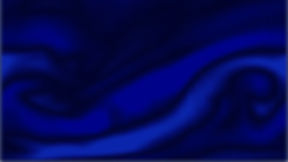
CHANNELFLOW 2.0
CHANNELFLOW 2.0
CHANNELFLOW 2.0
CHANNELFLOW IS A SOFTWARE SYSTEM FOR NUMERICAL ANALYSIS OF THE INCOMPRESSIBLE FLUID FLOW IN CHANNEL GEOMETRIES. IT IS WRITTEN IN C++ AND PARALLELIZED.
Channelflow 2.0 is developed by the Emergent Complexity in Physical Systems Laboratory (ECPS) at the Swiss Federal Institute of Technology Lausanne (EPFL). The project Channelflow 2.0 is based on the serial channelflow-1.5 software developed by John. F. Gibson, University of New Hampshire (UNH).
Channelflow is designed to lower the barrier to entry to numerical research in fluids
Explore it now:
Perform highly accurate direct numerical simulations of incompressible flows in a channel with two periodic directions and no-slip boundary conditions in wall-normal direction.
The Navier-Stokes equations are integrated in time using implicit-explicit finite differences. SPECTRAL METHODS are employed in space, where Fourier and Chebyshev expansions discretize the homogeneous and the wall-normal directions, respectively.
Create short, readable, easy-modifiable FLUID SIMULATION code
CHFLOW Library
Compute INVARIANT SOLUTIONS (equilibria, traveling waves and periodic orbits) of nonlinear dynamical systems, including the Navier-Stokes equation, using advanced linear algebra solvers. Follow solutions in parameter space (CONTINUATION), characterise their stability (SPECTRAL ANALYSIS) and construct bifurcation diagrams.
Solutions to very high-dimensional nonlinear systems are computed with Newton iteration, matrix-free methods (gmres, flexible gmres, bigcstab), and a hookstep trust-region optimization. Algorithmic variants are Tuckerman's Stokes preconditioning method for equilibria or travelling waves and a multi-shooting method for long periodic orbits.
Find INVARIANT SOLUTIONS of the Navier-Stokes equations using advanced computational methods for very high-dimensional nonlinear systems.
NSOLVER Library
FLEXIBILITY
The Channelflow package offers the possibility to simulate several different flow systems ranging from classical plane Couette and plane Poiseuille flow to the Asymptotic boundary layers (ASBL) and mixed systems. Channelflow implements various time-stepping algorithms and provides access to multiple nonlinear solvers. This flexibility allows to tune the numerical algorithms for the specific flow problem.
MODULARITY
The channelflow package consists of two independent libraries: chflow (short for channel flow) and nsolver (short for nonlinear solver). The chflow library handles the time integration of the Navier-Stokes equations. nsolver provides tools for the analysis of generic nonlinear dynamical systems. To use the functionality of nsolver, a time-stepping code needs to implement an interface class called DSI (dynamical systems interface).
PRE/POST-PROCESSING
The Channelflow package provides numerous utilities for pre- and post-processing. This includes tools to create, manipulate and analyze flow fields. A PYTHON WRAPPER gives direct access to the main flow field functions of the Channelflow library easing cross-language post-processing and data manipulation.
PARALLELIZATION
Computing invariant solutions and precise flow simulations in large domains are computationally expensive. Channelflow 2.0 is parallelized using the message passing interface (MPI) and fully exploits modern HIGH PERFORMANCE COMPUTING hardware with large number of processors
QUALITY ASSURANCE
The Channelflow community acknowledges the importance of reproducible in science. Continuous integration of the Channelflow software assures consistent functionality and code style while ONGOING DEVELOPMENT takes place.
FILE FORMATS
As default, data is stored in NetCDF format. This format is directly supported by several visualizations tools such as ParaView and VisIt. We also support other formats including HDF5 and legacy binary format.
PARALLEL I/O
Input/Output of large flow field data can be accelerated on parallel file systems thanks to the implementation of a parallel NetCDF file format.
SUPPORT






We acknowledge past and present support by
Swiss National Science Foundation SNSF
(grant no. 200021-160088, PI: Tobias M. Schneider)
National Science Foundation [1]
(CAREER grant no. 1554149, PI: John F. Gibson)
Max-Planck Society
Niedersächsisches Ministerium für Wissenschaft und Kultur
EPFL - Ecole Polytechnique Federale de Lausanne
EPFL SCITIAS
[1] This material is based upon work supported by the National Science Foundation under Grant No. #1554149. Any opinions, findings, and conclusions or recommendations expressed in this material are those of the author(s) and do not necessarily reflect the views of the National Science Foundation.